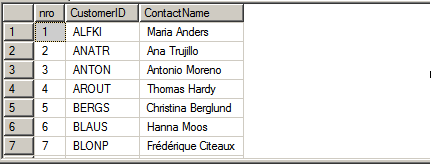Thursday, 21 August 2014
Error 601: Could not continue scan with NOLOCK due to SQL Server data movement
Just one hour ago one of my tips was published at MSSQLTips.com related to “Error 601: Could not continue scan with NOLOCK due to SQL Server data movement”. You can read it at http://www.mssqltips.com/sqlservertip/3289/error-601-could-not-continue-scan-with-nolock-due-to-sql-server-data-movement/ . Thanks for reading!
Saturday, 16 August 2014
SQL Server Replication Error – The specified LSN for repldone log scan occurs before the current start of replication in the log
My latest tip has been published today at mssqltips.com about “SQL Server Replication Error – The specified LSN for repldone log scan occurs before the current start of replication in the log” and you can read it at http://www.mssqltips.com/sqlservertip/3288/sql-server-replication-error–the-specified-lsn-for-repldone-log-scan-occurs-before-the-current-start-of-replication-in-the-log . Thanks for reading!
Friday, 25 July 2014
SQL Server Transactional Replication Error: Could not find stored procedure error and how to recover it by using sp_scriptpublicationcustomprocs
Today my tip about how to fix the “SQL Server Transactional Replication Error: Could not find stored procedure” has been published online in mssqltips.com, you can read it at http://www.mssqltips.com/sqlservertip/3287/sql-server-transactional-replication-error-could-not-find-stored-procedure-error-and-how-to-recover-it-by-using-spscriptpublicationcustomprocs/ . Thanks for reading!
Monday, 23 December 2013
Error: Index was outside the bounds of the array
It is said that we may work on SQL Server connecting to Object Explorer by using the SQL Management Studio tool (SSMS) of an older version. It is true up to a point, but there is a risk of getting some unexpected errors, for instance, we might get this error while working connected to SQL Server 2012 Object Explorer by using SQL Server 2005 SSMS.

More specifically, the error is raised because superior versions support more features, which means that each feature is likely to have one folder on the Object Explorer. Put differently, there is a bigger number of folders to display in SQL Server 2012 than SQL Server 2005 whose Object Explorer cannot display more because the max array index is outside the bounds that this supports. Ideally, it is highly advisable to always use the latest SSMS to connect to older versions (but not vice versa). As simple as water. That is all for now, let me know any remarks you may have. Thanks for reading.

More specifically, the error is raised because superior versions support more features, which means that each feature is likely to have one folder on the Object Explorer. Put differently, there is a bigger number of folders to display in SQL Server 2012 than SQL Server 2005 whose Object Explorer cannot display more because the max array index is outside the bounds that this supports. Ideally, it is highly advisable to always use the latest SSMS to connect to older versions (but not vice versa). As simple as water. That is all for now, let me know any remarks you may have. Thanks for reading.
Sunday, 12 December 2010
SQL11 (Denali): New object SEQUENCE
SQL Server 2012 CTP1 is coming up with a new object named SEQUENCE which allows to manage sequence numbers between 2^31 – 1 and 2^31 –1. SEQUENCE solves many problems with respect to using the IDENTITY property because it is not tied to the column and can be used for many columns in different tables. In this capacity, this novelty is useful as alternative solution and in replacement of ROW_NUMBER for some cases. SEQUENCE can be used with UNION ALL but not with Functions, DISTINCT, UNION, EXCEPT and INTERSECT. The way of using is very easy, practical, flexible and offers better performance than IDENTITY. Creating the right indexes on columns which takes values from SEQUENCE object will help tremendously, indeed.
Creating a SEQUENCE object is simple.

Creating a SEQUENCE object is simple.
CREATE SEQUENCE dbo.MySeq AS INT START WITH 1 INCREMENT BY 1 MINVALUE 1 MAXVALUE 100 CYCLE CACHE 20 ;
Now using it:
SELECT NEXT VALUE FOR dbo.MySeq GO 4
The result would be something like this:
(no column name)
1
2
3
4
If we execute again the previous query, the result will be numbers from 5 to 8, and so on. However, if we want to reinitialise the sequence, it can be done as follows:
ALTER SEQUENCE dbo.MySeq RESTART
Now using SEQUENCE as an alternative of ROW_NUMBER:
select next value for dbo.MySeq as [nro], Employees.FirstName from Employees

And also in this way:
select next value for dbo.MySeq over (order by customers.CustomerID ) as [nro], customers.CustomerID, Customers.ContactName from Customers
Here are some resources to check out more information about SEQUENCE:
- Creating and Using Sequence Numbers.
http://msdn.microsoft.com/en-us/library/ff878058(v=SQL.110).aspx - sp_sequence_get_range (Transact-SQL)
http://msdn.microsoft.com/en-us/library/ff878352(v=SQL.110).aspx - SQL Server v.Next (Denali): Using SEQUENCE http://sqlblog.com/blogs/aaron_bertrand/archive/2010/11/11/sql-server-11-denali-using-sequence.aspx
That is all for now, let me know any remark you may have. Thanks for reading.
HELLO, I'M PERCY REYES! I've been working as a senior SQL Server Database Engineer for over 20 years; I'm a three-time Microsoft Data Platform MVP. I'm a cryptographer conducting research on cryptographic Boolean functions and their applications.